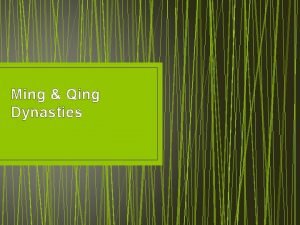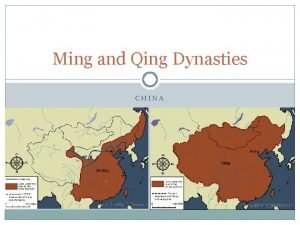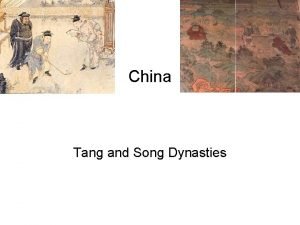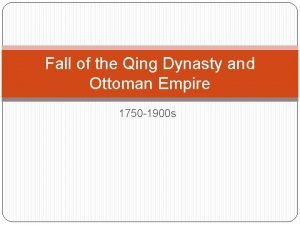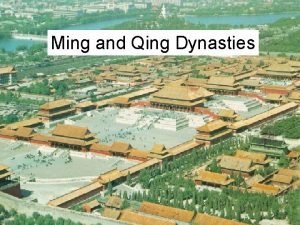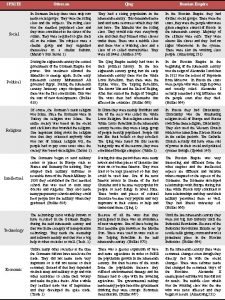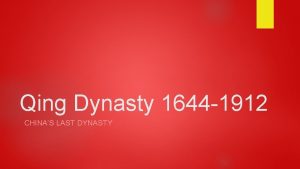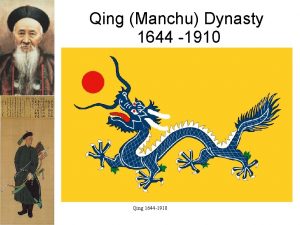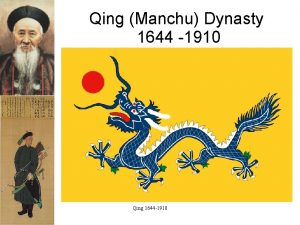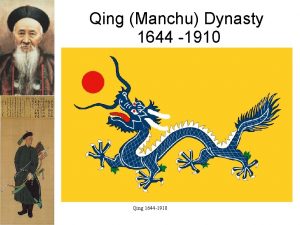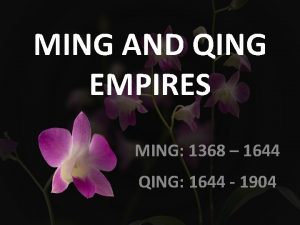Qing Dynasty 1644 1912 Fall of Ming While








- Slides: 8

Qing Dynasty – 1644 -1912

Fall of Ming • While the Ming initially maintained the sea-trade and naval emphasis (Zheng He) of the Song Dynasty before the Mongols, they soon changed their focus and spending • Instead of focusing on world influence, the Ming focused internally, largely ignoring the outside world and focusing on defense • With a disastrous silver-only tax policy, and loss of economic output, the also focused primarily on northern defense • By 1644, the slipping Ming Dynasty lost out to northern invaders from Manchuria • Known as the Manchu people, the invaders quickly took over and adopted much of the already-established Chinese culture and political systems, starting the Qing Dynasty

Qing Dynasty (1644 -1912) • One aspect the Manchu adopted from the Han Chinese Ming Dynasty was the Confucian Examination System • Essentially, to participate in the government, one had to pass a rigorous amount of test based on Classical China and Confucianism • This left gov. slots only open to elites who could afford to send their male sons to study for years and complete the tests • While leaving many gov. officials untrained for actual gov. /econ rule, it provided China with a solid, unified culture and helped maintain social harmony • Wanting to maintain this harmony and tradition, the Qing Dynasty kept the Confucian Examination system as a means to appease and control the Han Chinese, and keep them stable

Max Extent of Qing Dynasty -18 th century

Qing Expansion and Power • Once in power, the Qing Dynasty continued to expand China’s land borders, as Europeans continued to control maritime trade and coasts • Taking territories from the weakening khanates and areas of Southeast Asia, Emperor Kangxi (1654 -1722) created the largest Chinese empire • Like Louis XIV, Peter the Great, the Ottoman sultans, and Mughal emperors, the Qing Dynasty too demonstrated power through culture • Qing Emperors often comissioned the painting of life-size portraits of their emperors to demonstrate power and influence

Emperor Kangxi

Domestic Policies • While examination systems were used by the Qing to maintain Han social harmony, many other policies were outright oppressive • One particular oppressive policy was the banning of all marriage between Manchu and Han people • This was done to maintain Manchu identity and dominance over the Han • Lastly, the Manchu hairstyle the queue was made official for males, and punishable, eventually, by death • Again, the Manchu imposed this cultural aspect on the Han to demonstrate their dominance over the Han Chinese, and, somewhat, to their culture

